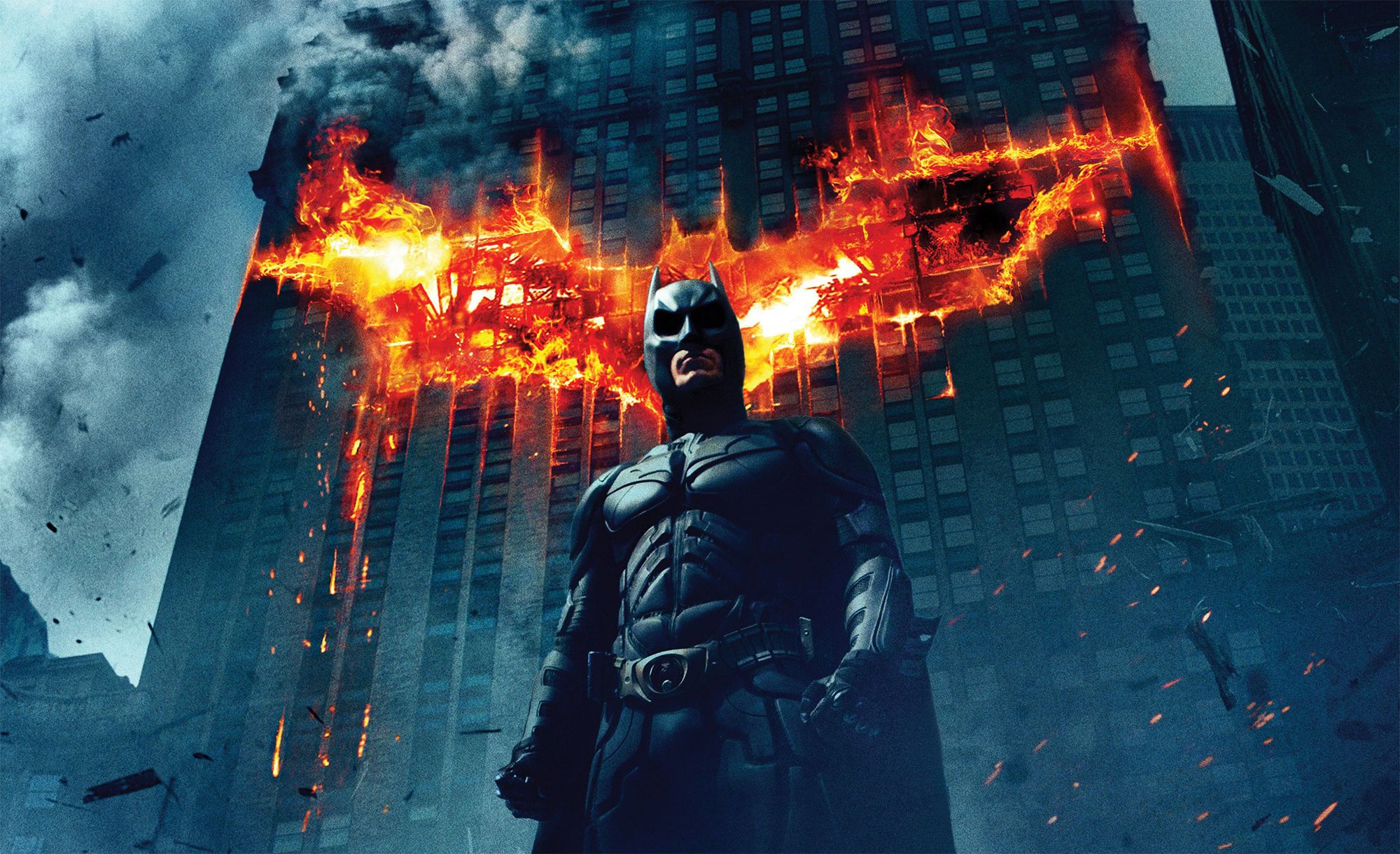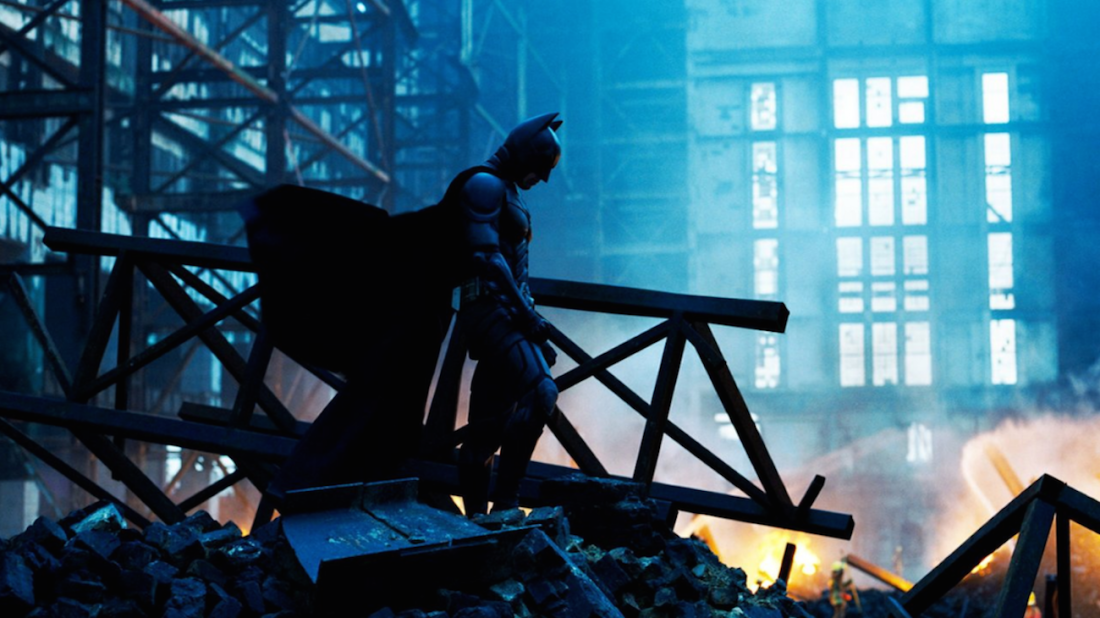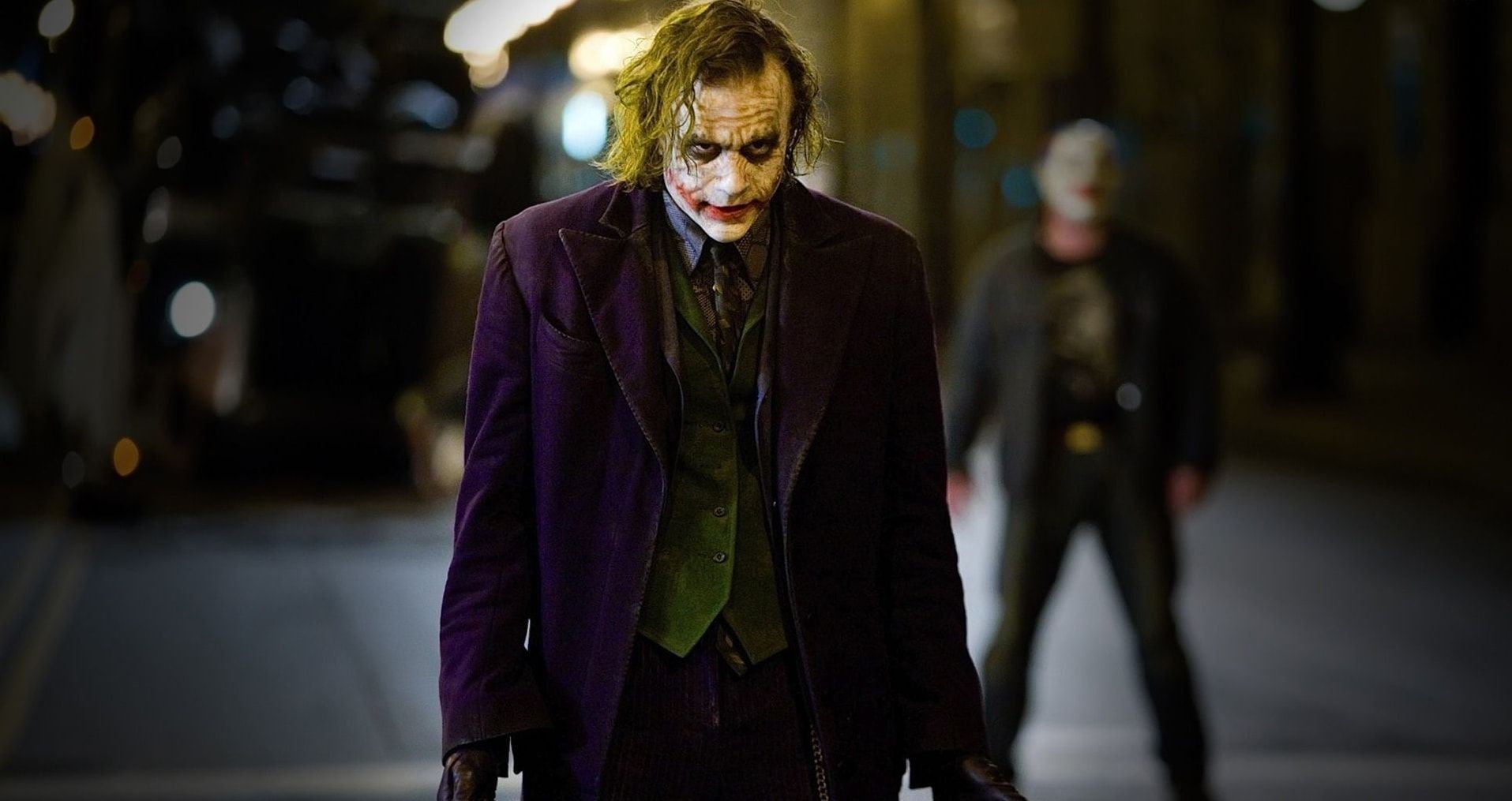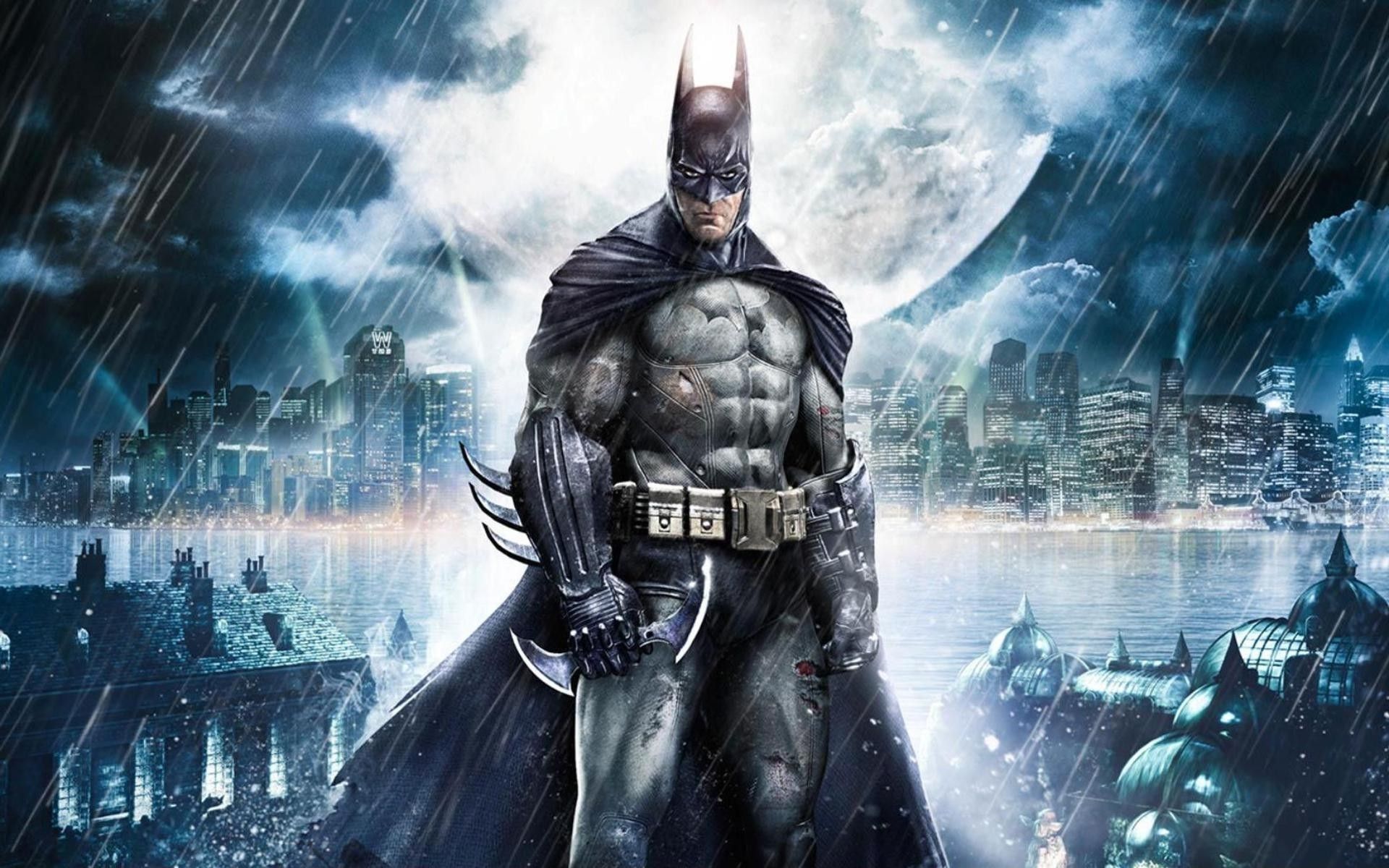Chaos thrives at the heart of The Dark Knight. From the movie's opening heist that introduced its iconic take on a classic villain, to the endless debate of Joker's "unstoppable force" meeting Batman's "immovable object," The Dark Knight presented one of the darkest and most engaging film adaptations of Batman that we've ever seen, and ten years on from its release, still reverberates as a peak film in the landscape of comic book movies.
Originally released on July 18th, 2008, this week has officially marked ten years since the release of The Dark Knight, director Christopher Nolan's seminal superhero film that has certainly grown in reverence since the time of its release. In the current era of superhero movies being dominated largely by the efforts of Marvel and their ever-expanding Cinematic Universe, it's interesting to look back and reflect on a time before all comic book movies were beholden to being part of a franchise's larger intentions. In that instance, The Dark Knight is maybe one of the last movies of its kind, coming right after Marvel launched its Cinematic Universe with Iron Man.
[pullquote]"The story of [The Dark Knight's] cancelled video game tie-in presents an interesting contrast to what is one of the most acclaimed comic movies of the generation."[/pullquote]
But more importantly, The Dark Knight represented a seismic shift in the cultural and critical perception of superhero movies being seen beyond their pure entertainment value. There's not much more I can add about the powerful (and Oscar-winning) performance of The Joker by the late Heath Ledger, the film's dark and complex story that tied together action, drama, and crime, and the direction of Christopher Nolan that elevated comic films on all levels, from cinematography, to storytelling, and its (at the time) innovative use of IMAX cameras to heighten its scope and spectacle. The Dark Knight was more than just a superhero movie, and its critical and commercial success (at the time) certainly showed that: even today, the film holds 10th place in the highest-grossing films of all time in North America (35th worldwide), and garnered eight Academy Award nominations.
While the film has been celebrated for a decade now for its dark and complex take on one of the most iconic heroes of all time, one of the lesser-known and more interesting side-stories coming from The Dark Knight was the story behind a video game that was in development based on the film but, sadly, never saw the light of day. Batman has been no stranger to video games over the past several decades, but in the wake of The Dark Knight and a re-examination of its legacy a decade later, the story of its cancelled video game tie-in presents an interesting contrast to what is (arguably) one of the most acclaimed comic movies of the generation.
Prior to the release of the film, Batman: The Dark Knight was an action-adventure video game in development from Pandemic Studios, the studio behind numerous titles such as the Mercenaries series, Destroy All Humans!, and the first two titles of the Star Wars: Battlefront series, before their current revivals made by DICE. As an intended tie-in game to the highly-anticipated summer blockbuster, a lot was riding on Batman: The Dark Knight and Pandemic to deliver an experience that would draw from the acclaimed film, but numerous obstacles in the game's development (and a constrictive deadline) ultimately led to the game's cancellation.
While the game itself ended up dying a premature death, over two and a half years ago, footage from the game did eventually make its way online through DidYouKnowGaming? and their "Unseen64" series, which highlights cancelled or unreleased games. The full Unseen64 video -- which features a deep dive into some in-progress gameplay and behind-the-scenes footage from Batman: The Dark Knight -- can be found below:
Development on Batman: The Dark Knight had begun in fall 2006, prior to the beginning of production on the film itself. Work on the game had commended between Pandemic and the game's publisher, EA, which had previously published a tie-in game for Nolan's first Batman film, 2005's Batman Begins, with developers Eurocom and Vicarious Visions. While Pandemic had wrapped up work on Destroy All Humans! 2 (which released in 2006 on PS2 and Xbox), the studio was then split into two development teams, as one half of the studio was working on a racing game for Wii, and the other team, the Australia-based Pandemic Brisbane, began working on Batman: The Dark Knight.
Batman: The Dark Knight, for all intents and purposes, was planned to be a linear experience in the vein of the Batman Begins tie-in game that mixed action and stealth, and was going to release for Xbox 360 and PS3 (though early prototypes of the game were developed in the beginning stages on PS2). While work on The Dark Knight film was still in the beginning phases of production, Pandemic had already begun work on making the game even before receiving materials based on the film, and began development by building out Gotham City and designing the tech behind Batman's movement and abilities.
However, once production on the film had begun and the development team had seen elements from the film -- such as Heath Ledger's radically different take on The Joker and the film's grittier depiction of Gotham -- this led Pandemic to decide to take on an open-world structure for Batman: The Dark Knight to better suit the scope of the film. Remnants of this open-world design can not only be seen in Unseen64's video above, but Kotaku also uncovered numerous screenshots depicting some of the environments and levels that were in progress for the game, from one of the game's 3D artists, Michael Pryor:
The shift to an open-world design presented one of the largest obstacles for Pandemic to overcome in developing Batman: The Dark Knight, and was likely the biggest contributor to its demise. While the change to an open-world design presented a more creative (and at the time, unique) approach to designing a Batman-focused game, it also led to impenetrable technical challenges for the development team at Pandemic that was working on the game. Specifically, the largest of these hurdles came from bringing the game's assets over into a game engine that Pandemic was developing at its Los Angeles location called "Odin."
The engine itself was being developed for the purposes of The Saboteur, the World War II-era open-world action game that Pandemic ended up releasing in late 2009. While Odin in this case was being built for the purposes of an open-world game like The Saboteur, translating what Pandemic had already made for Batman: The Dark Knight over to this new engine proved to be a difficult, it not insurmountable feat.
In a report from Kotaku Australia at the time, the game wound up with numerous performance issues as a result of trying to implement more advanced tech within a game that was not originally intended to be open-world, such as HDR lighting. Including the model of Batman himself would drop the performance down to as low as 5 frames-per-second or outright cause the game to crash, and the problems only became worse when trying to incorporate additional NPCs into the game world.
[pullquote]"The shift to an open-world design presented one of the largest obstacles for Pandemic to overcome in developing Batman: The Dark Knight."[/pullquote]
These technical challenges all tied in to the fact that EA had a window of only 18 months to develop and release the game, due to the constraints with its hold on the Batman IP. While the game was intended to release alongside the film in July 2008, the setbacks of its development instead shifted plans for EA and Pandemic to launch the game in December 2008 alongside The Dark Knight's release on Blu-ray and DVD.
While the game was getting the benefit of additional development time, even then the beginning of the end was emerging for Batman: The Dark Knight, as the game proved to be in bad shape just a few months before its intended December 2008 release. This was all compounded with even further pressure on the development team as Gary Oldman, who played Jim Gordon in Nolan's Batman films (and had a part in the game alongside most of the film's cast), had accidentally let slip that the game was in development after EA and Pandemic had been trying to keep the project under wraps, making its impending release all the more crucial.
With the reality setting in that the game would not be ready for its intended release at the end of 2008, especially after Pandemic brought on additional contracted developers to assist with the game, EA ultimately chose to cancel Batman: The Dark Knight in fall 2008. In an article from Newsday from August 2008, game analyst Michael Pachter estimated that profits of over $100 million could have been lost on the cancellation of Batman: The Dark Knight, and as a result of cuts within EA and its properties in the time afterward, Pandemic Brisbane was shut down entirely in the following February of 2009.
[pullquote]"We could have had a very different kind of open-world Batman game in Batman: The Dark Knight before we had any signs of what Rocksteady was doing with the Arkham games."[/pullquote]
From the glimpses that we've seen from the game, Batman: The Dark Knight showed promise in trying to adapt one of the year's biggest movies into an action-packed take on the Caped Crusader. And yet while the game ultimately met an unfortunate end, the aftermath of its cancellation provides some interesting pieces of Batman (and gaming) history to look back on. Perhaps the most interesting wrinkle in the demise of Batman: The Dark Knight is the fact that after its cancellation, the rights to the Batman license ultimately wound up back in the hands of Warner Bros. Interactive Entertainment, leading to the birth to perhaps the best adaptation of Batman in video games that we've seen yet: the Batman: Arkham series.
While the Arkham series went on to critical and commercial success in the years following, it's interesting to think back and realize that while players got their first look at an open-world Batman game in the form of Batman: Arkham City in 2011, things could have gone very differently. Instead, we could have had a very different kind of open-world Batman game in Batman: The Dark Knight from (essentially) a movie tie-in game, before we had any signs of what Rocksteady was doing with the Arkham games.
Ten years later, there's no denying that The Dark Knight has left an indelible mark on the genre of superhero films. Though its game adaptation ultimately was left dead in the water after numerous development challenges and hurdles, the fact that Batman has evolved in so many other ways beyond film and comics -- such as recent game adaptations like the Arkham series or the Batman series from Telltale Games -- shows that Pandemic's Batman: The Dark Knight may have left a different kind of legacy.




